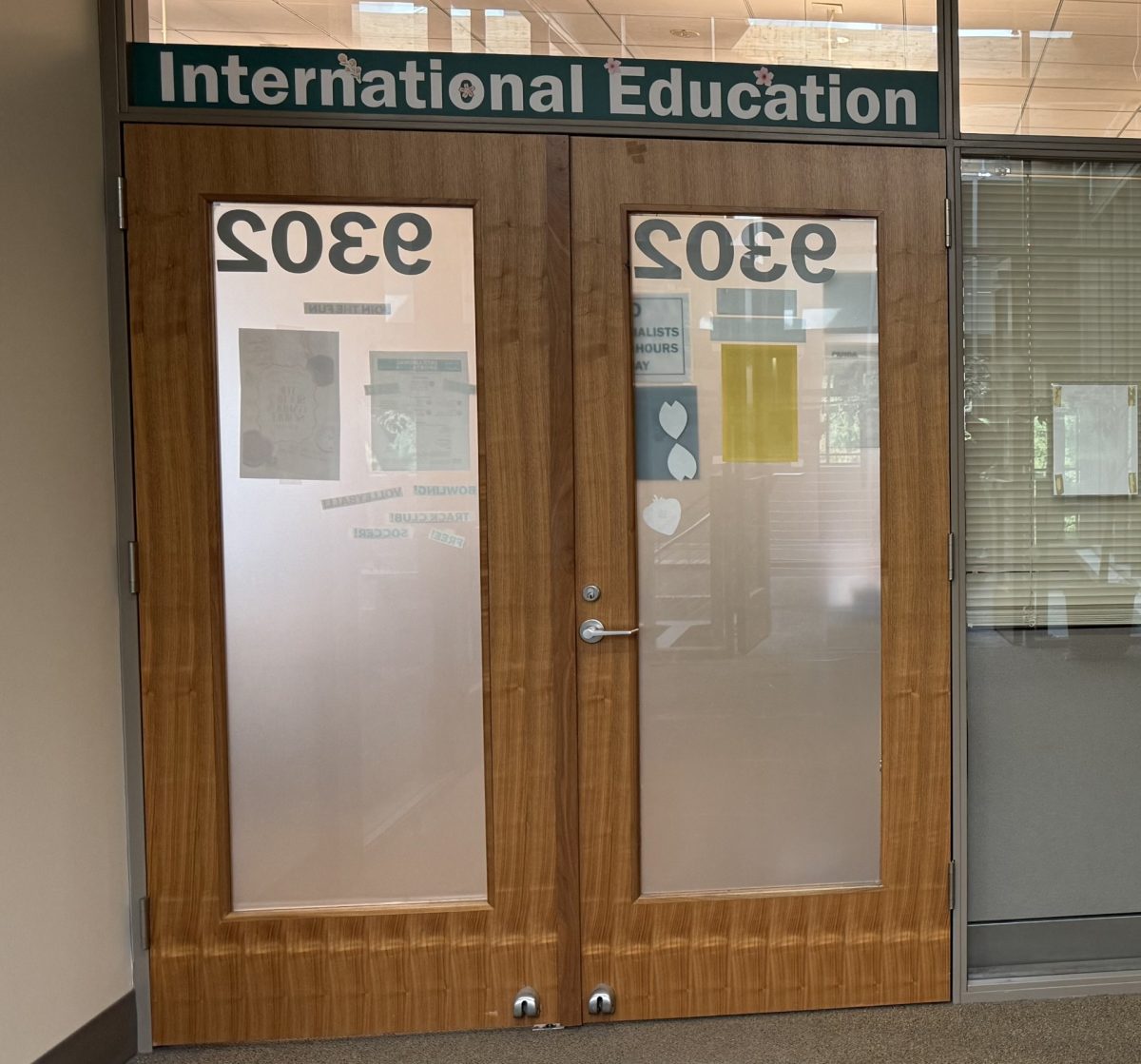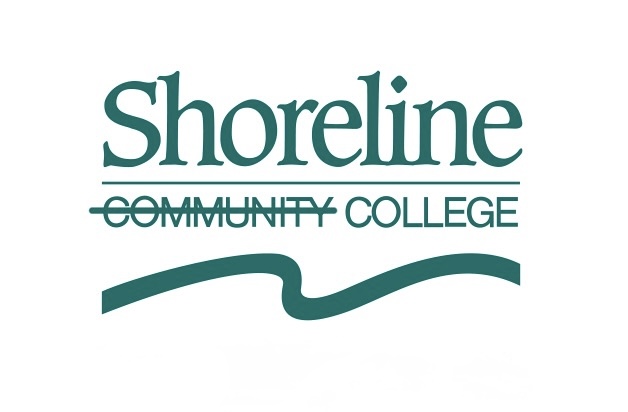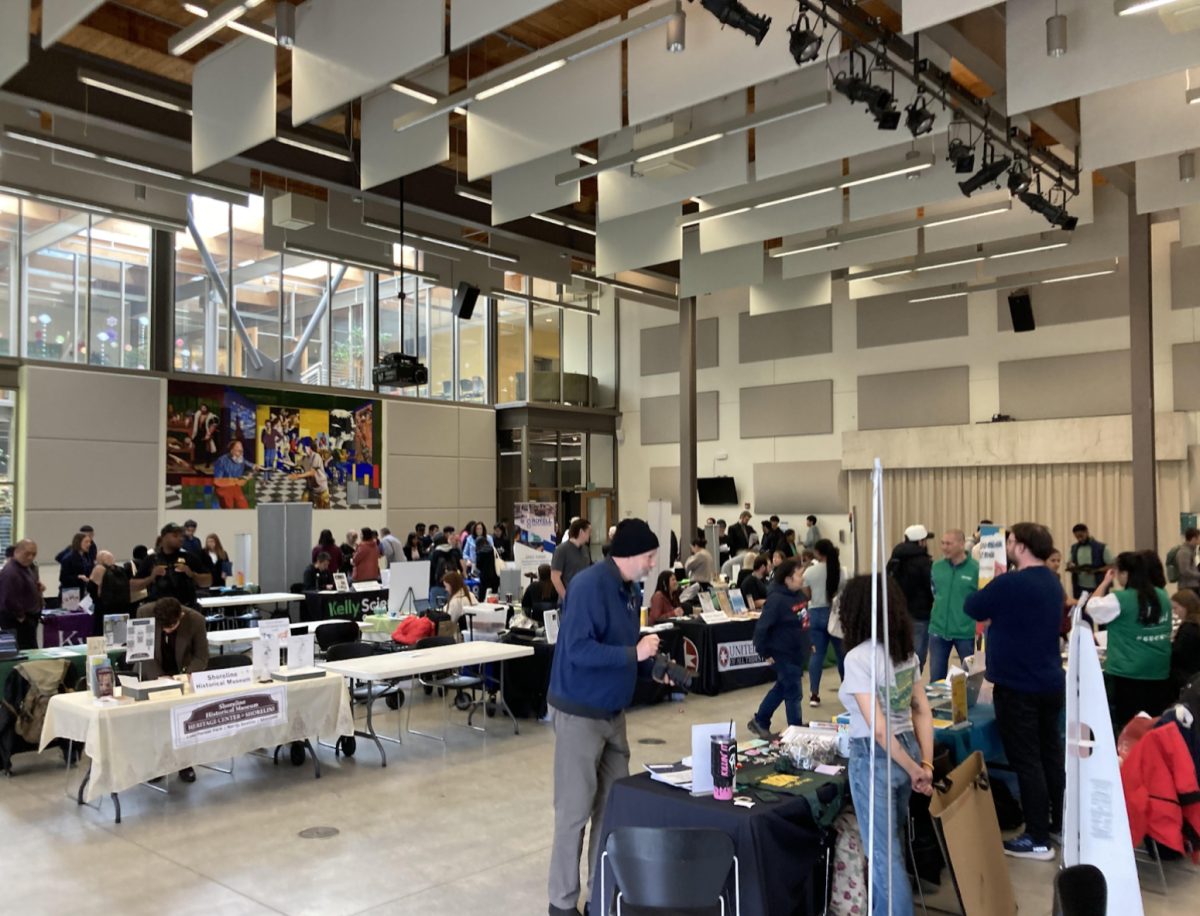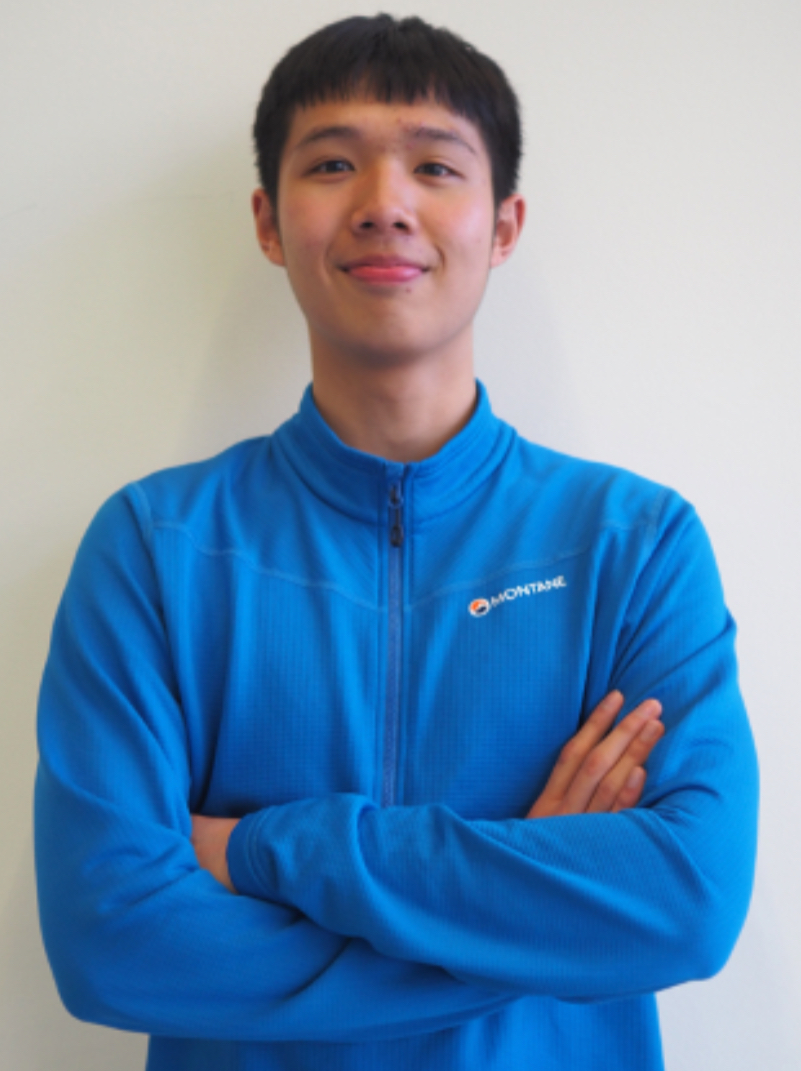CAN FREE SPEECH BE TOO FREE?
Last year, a white supremacist wearing a Hammerskins emblem appeared at SCC.
It raised questions about the boundaries of free speech and brought up the argument of whether free speech protects or harms the vulnerable.
On May 3, over 100 people attended a lecture, “When ‘Free Speech’ Is Actually Its Opposite,” presented by the Faculty Senate Council in Room 2308. The event discussed the limits of free speech and the guidelines colleges could put in place to combat discriminatory speech.
The speech was given by Shon Meckfessel, who has been a faculty member at Highline College for 10 years and has 30 years of experience in engaging with social justice movements.
Meckfessel split the lecture into four parts: examples of controversial issues, criticism of free speech, ways for institutions to oppose bigotry and a discussion session.
Criticism
1. Inconsistency
Meckfessel argued that even though everyone’s freedom of speech is protected by the First Amendment regardless of the content of the message, the two ends of the political spectrum are not on the treated the same.
He gave a few examples to demonstrate the inconsistency he saw in “free speech.”
His first example was of Anita Sarkeesian, a feminist scholar who wrote about gender construction in gaming. During Sarkeesian’s 2014 college speaking tour, terror threats were made by an anonymous student who said he would take “revenge” if her event at Utah State University (USU) was held.
Sarkeesian was forced to cancel the event at USU because the police “wouldn’t take steps to prevent concealed firearms at the event,” according to her Twitter.
Prior to this, she had already held events in three universities despite numerous death threats, according to Sarkeesian.
Meckfessel’s other example involved an incident from last year, when a former senior editor for Breitbart News, Milo Yiannopoulos, was invited to speak at UW’s Kane Hall. UW canceled a few events related to students of color on campus and closed the campus to protect participants’ safety.
Even after the UW Police Department had obtained credible information that outside groups were planning to join the event with an intent to initiate violence, UW didn’t cancel the event.
One man was shot during the event by supporters of Yiannopoulos and $75,000 of police overtime was spent, according to the Seattle Times.
Meckfessel’s next example occurred just one month later, when Keeanga-Yamahtta Taylor, a Princeton University professor who described Donald Trump as “a racist and sexist megalomaniac,” received death threat emails before she was scheduled to speak at Town Hall Seattle. However, Taylor canceled the lecture because the police department said they weren’t able to ensure her safety.
2. Platforms Are Not a Right
Although the First Amendment allows everyone to be able to say what they want, Meckfessel said that a platform to speak isn’t guaranteed in the First Amendment.
What he meant by a platform is a space that has to be provided by an institution for the speaker to be heard.
He said he believes that when a speaker asks for a large room with a big audience in order to be heard, the institution can legally tell the party that their message is not what they believe or is not important enough to give them the space.
“That isn’t censorship or denial of First Amendment,” he said.
Meanwhile at SCC, everyone is welcomed to speak on the campus. But if someone wants to be heard, it doesn’t mean that the school has to make sure they get a big lecture room and promotion for their speech.
3. Expertise vs Bullshit
So, what is the standard to decide whether or not a message is valid or worth hearing?
Meckfessel said there were lots of times when people used research to make excuses in promoting inequality.
Last year, the University of Vermont (UVM) accepted a speaker, Charles Murray, whose 1994 book “The Bell Curve,” stated that people of color are biologically less intelligent than white people. Meckfessel said Murray’s idea was discredited by scholars as purely racism and fake science. While Murray was speaking, hundreds of UVM students turned their backs, raised signs and made noises to protest against him.
Meckfessel said it brought up the question of why give someone a space to speak when the ideas aren’t even worth discussing?
He said it was the same as denying the Holocaust, basically expressing a statement when there is a ton of evidence against it.
“By asking questions that have been answered already, they are asking to return to the social system where the question was accessible or acceptable,” Meckfessel said.
4. Paradox of Tolerance
Meckfessel asked, when we are pursuing a tolerant society made up with all sorts of people, should the the tolerant tolerate intolerance?
He cited the paradox of tolerance, a concept coined by philosopher Karl Popper, saying that when we expand our tolerance to someone who is intolerant, the intolerance will end up destroying the tolerance and undermining the right to speak.
When speech dehumanizes others, “that’s ‘un-free-speech’, that’s anti-conversations,” according to Meckfessel; thus this form of speech shouldn’t be tolerated.
How can we oppose bigotry?
Meckfessel encouraged educational institutions to make their statements against bigotry clearer.
“(SCC) does not tolerate hateful, violent, or discriminatory actions that target any person or group based on their beliefs, customs, identity, or affiliations,” he said, quoting SCC’s Community Standard, acknowledging the statement’s powerful language and action terms.
But how would SCC define “hateful” and what do they mean by “does not tolerate?”
Meckfessel suggested colleges consider the following guidelines:
1. Set a Standard of “Hate”
“Hate” is a vague and subjective word which varies with people’s perspectives. Therefore, Meckfessel said, “‘hate’ maybe is not the best way to judge this kind of segregation.”
He referred to a 14-word white supremacy slogan: “We have to secure the existence of our people and a future for white children.”
Meckfessel said that without the word “white,” the slogan could be about family values for all.
He said when a poster of racism is framed in love, even though viewers are able to understand the real meaning, there is no place to refer to it as hateful.
Sometimes, he said, “‘hateful’ can be applied in wrong direction, to people who fight against injustice.” Therefore colleges should be specific in the terms they use, to prepare for contradiction, instead of using “hate” as a guideline.
2. Understand Unprotected Free Speech
Freedom of speech is too easily abused when everyone can express what they think without any limitation, he said.
However, Meckfessel said when content of speech involves a real threat, harassment or incitement of violence, the speech wouldn’t be protected anymore. He said the speech itself is a crime, according to a Supreme Court case from 2003.
That was a case in 2003 about an anti-abortion poster, which listed crossed-out names of murdered abortion doctors and names of living abortion doctors ready to be crossed out. The case was decided by the Supreme Court as a “true threat” to the doctors’ physical safety and therefore not protected under free speech.
“If the content of speech is preventing (colleges’) function of providing education to diverse student body,” he said, that’s interference to what the institution is advocating for.
3. Build Discussions in Classrooms
Although platforms aren’t a right, Meckfessel emphasized that a public platform is different from a classroom, where discussion of different perspectives can happen.
When students in a class have established trust and friendship, these topics could be considered as an open, critical discussion topic for them to speak from an academic perspective.
And through debate, students would be able to fill in flaws and gaps in others’ arguments and accept different perspectives.
Meckfessel said he believes that the issue of speech affects the community on different levels, which requires a response from society, starting in educational institutions.
He urged colleges to reckon with “who we are, where we are, what’s the institution for and what’s our mission.”
Discussion Session
One student attendee said he agreed that there is inconsistency within free speech, but he felt that Meckfessel wasn’t giving equal description of both sides as he didn’t mention any examples from the other side, aside from the alt-right incidents such as bomb threats.
Meckfessel responded that he couldn’t think of any examples of violence where the “other side” tried to shut down others’ speeches in a public space.
“My argument is based on how they are not on equivalent sides when allowing public space to speak,” he said.
Another student followed up on his response by giving examples of Ben Shapiro’s speech at UC Berkeley and Jordan Peterson.
Yet, according to UC Police Chief Margo Bennett, the protest during Ben Shapiro’s speech “was loud but not violent.” Besides, Jordan Peterson actually made a threatening statement on his Twitter in response to comments from social critic Pankaj Mishra.
Yet another student asked Meckfessel if he agrees that free speech should be regulated in some ways.
In response, Meckfessel said free speech has its own limitations when a person’s speech isn’t only on a expressive purpose but for threatening others. And the Supreme Court has stated in previous cases that when a reasonable person feels a real threat, that threat is not protected free speech.
By Frances Hui,
Political Editor







